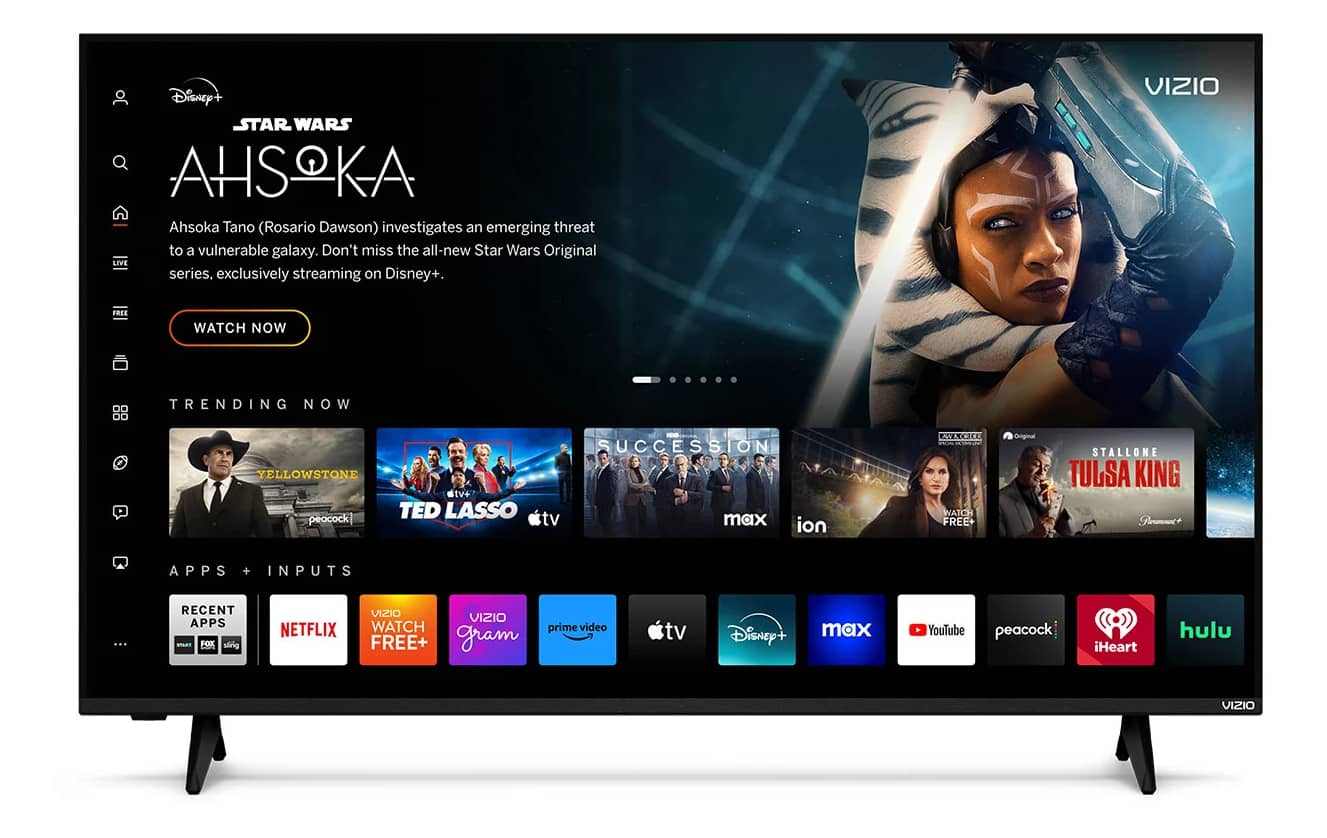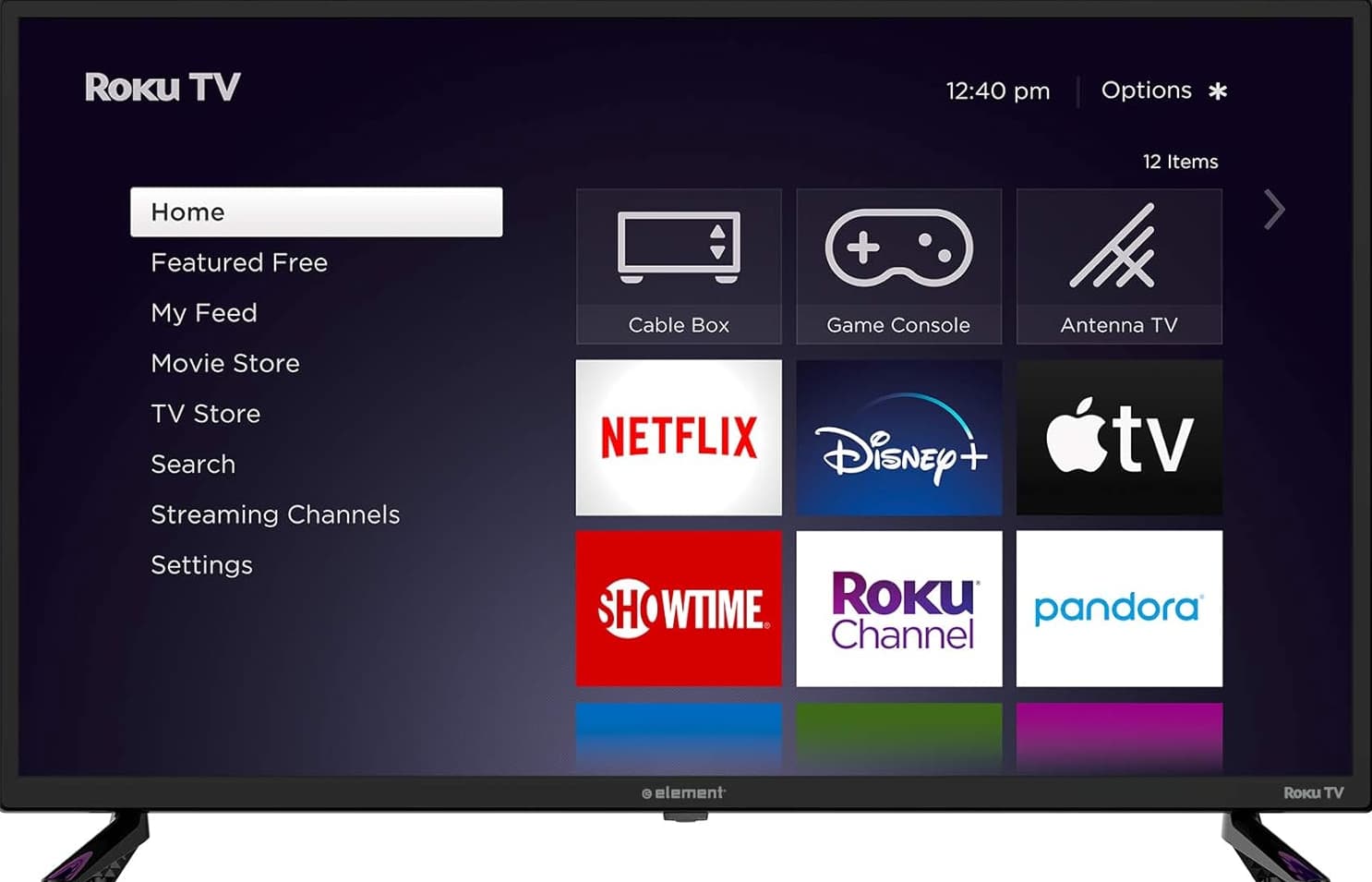Is your Vizio TV giving you a headache with its mysterious blinking power light? You’re not alone in this frustrating situation.
Many Vizio TV owners have encountered the perplexing issue of their Vizio TV Power Light Blinking 12, 15, 16, 20 & 24 Times.
This seemingly cryptic code of flashes can leave even the most tech-savvy individuals scratching their heads.
When your TV starts communicating through a series of blinks instead of displaying your favorite shows, it’s natural to feel confused and concerned.
Each pattern of blinks – whether it’s 12, 15, 16, 20, or 24 times – is your TV’s way of signaling that something isn’t quite right. It could be anything from a minor software glitch to a more serious hardware malfunction.
Vizio TV Power Light Blinking

In this comprehensive guide, we’ll delve into the world of blinking TV lights, exploring what these different patterns might mean and why they occur.
We’ll break down the mystery behind these blinking codes and provide you with a roadmap to diagnosis and resolution.
Whether you’re dealing with a persistent 12-blink pattern or a puzzling 24-blink sequence, we’ve got you covered.
So, let’s embark on this journey to demystify your Vizio TV’s blinking language and get you back to enjoying your screen time.
Understanding the Blinking Light Code
Before we jump into fixing the problem, it’s important to understand what those blinking lights mean.
Your Vizio TV uses these light patterns as a way to communicate that something’s not quite right.
It’s like a secret code that your TV is using to tell you, “Hey, I need some help here!”
Here’s a breakdown of what different blink patterns might indicate:
- 12 blinks: This often points to a problem with the TV’s main board. The main board is like the brain of your TV, so when it’s having issues, it can cause all sorts of problems.
- 15 blinks: Usually, this indicates a power supply issue. The power supply is what gives your TV the electricity it needs to run, so if it’s not working right, your TV won’t either.
- 16 blinks: This pattern might be telling you there’s a backlight problem. The backlight is what makes the picture on your screen visible, so if it’s broken, you might not see anything even though the TV is on.
- 20 blinks: Often, this means there’s a software glitch. It’s like when your computer freezes and needs a restart.
- 24 blinks: This could indicate various internal issues. It’s a bit of a catch-all for problems that don’t fit into the other categories.
Remember, these blink codes are just a starting point. They help us narrow down where the problem might be, but they don’t always tell the whole story.
That’s why we’ll go through a series of steps to try and fix the issue, no matter what blink pattern you’re seeing.
Quick Fixes to Try First
Before we get into the more complex solutions, let’s start with some quick and easy fixes.
Sometimes, the simplest solution is all you need to get your TV back up and running.
Here are some quick fixes to try:
- Unplug and wait: This is the classic “turn it off and on again” approach but for TVs. Here’s how to do it properly:
- Unplug your TV from the wall outlet.
- Wait for at least 5 minutes. This gives the TV time to fully discharge any stored electricity.
- While you’re waiting, press and hold the power button on the TV itself (not the remote) for about 30 seconds. This can help drain any remaining power.
- After 5 minutes, plug the TV back in and try turning it on.
- Check the power cord: Sometimes, the problem is as simple as a loose connection. Here’s what to look for:
- Make sure the power cord is firmly plugged into both the TV and the wall outlet.
- Check the entire length of the cord for any visible damage, like frayed wires or bent plugs.
- If you have a spare power cord that fits your TV, try using it to see if the original cord is the problem.
- Inspect the remote: A faulty remote can sometimes cause your TV to behave strangely. Try these steps:
- Remove the batteries from the remote.
- Press every button on the remote once or twice. This can help unstick any buttons that might be jammed.
- Put in fresh batteries. Even if you think the old ones are fine, new batteries can sometimes solve mysterious problems.
- If possible, try using a different remote that works with your TV model.
- Check for blocked sensors: Your TV needs to be able to “see” the signal from your remote. Make sure nothing’s in the way:
- Look for the small dark window on the front of your TV where the remote sensor is located.
- Remove any objects that might be blocking this sensor.
- Clean the sensor area gently with a soft, dry cloth to remove any dust or debris.
- Verify the power source: Sometimes the problem isn’t your TV at all, but the outlet it’s plugged into:
- Try plugging your TV into a different outlet to see if it works.
- If you’re using a power strip or surge protector, try plugging the TV directly into the wall outlet instead.
- Check if other devices work when plugged into the same outlet your TV was using.
If these quick fixes don’t solve the problem, don’t worry. We’ve got more detailed steps coming up that should help you tackle even stubborn issues with your Vizio TV.
Hard Reset Your Vizio TV?
If the quick fixes didn’t do the trick, the next step is to try a hard reset. A hard reset is like giving your TV a fresh start.
It can clear out temporary glitches and restore your TV to a stable state. Here’s a detailed guide on how to perform a hard reset on your Vizio TV:
- Turn off your TV: Use the power button on the TV itself, not the remote.
- Unplug the TV: Disconnect the power cord from the wall outlet. If your TV is connected to a power strip or surge protector, unplug it from there as well.
- Locate the power button on the TV: This is usually on the side, bottom, or back of the TV. It’s important to use the button on the TV itself, not the remote control.
- Press and hold the power button: Push and hold down the power button for at least 30 seconds. This might feel like a long time, but it’s necessary to fully discharge any residual power in the TV.
- Keep holding while you plug the TV back in: While still holding the power button, plug the TV back into the wall outlet. This can be tricky if you’re doing it alone, so don’t be afraid to ask for help.
- Continue holding for 10 more seconds: After plugging the TV back in, keep holding the power button for an additional 10 seconds.
- Release the button and try turning on the TV: Let go of the power button and try to turn on your TV using the power button on the TV itself (not the remote).
If the hard reset worked, your TV should turn on normally without any blinking lights.
If it doesn’t work the first time, don’t get discouraged. You can try this process a couple of times to make sure you’ve done it correctly.
Here are some tips to make the hard reset process more effective:
- Be patient: The whole process can take a minute or two. Don’t rush through the steps.
- Use the TV buttons: Always use the buttons on the TV itself for this process, not the remote control.
- Check the power source: Make sure you’re plugging the TV back into a working outlet.
- Wait before turning on: After completing the reset, wait a few seconds before trying to turn the TV on.
If the hard reset doesn’t solve the blinking light problem, don’t worry.
We still have more solutions to try, including a factory reset, which we’ll cover in the next section.
Factory Reset Your Vizio TV (With Remote)
If a hard reset doesn’t solve the problem, the next step is to try a factory reset. A factory reset is more thorough than a hard reset.
It erases all of your TV’s settings and returns it to the state it was in when you first bought it. This can often fix more stubborn software issues that might be causing the blinking light problem.
Important Note: A factory reset will erase all your settings, including your Wi-Fi password, custom picture settings, and any apps you’ve downloaded. Make sure you’re okay with this before proceeding.
Here’s how to perform a factory reset on your Vizio TV using the remote control:
- Turn on your TV: If your TV isn’t turning on fully, try to at least get it to a state where you can see the menu.
- Press the “Menu” button on your remote: This should bring up the main menu on your screen.
- Navigate to “System”: Use the arrow keys on your remote to scroll through the menu options until you find “System.”
- Select “Reset & Admin”: Within the System menu, look for an option called “Reset & Admin” and select it.
- Choose “Reset TV to Factory Defaults”: This option should be available in the Reset & Admin menu.
- Enter the parental lock code: If you’ve set up a parental lock, you’ll need to enter the code now. If you never set a code, try entering “0000” which is often the default.
- Select “Reset”: Your TV will ask you to confirm that you want to reset to factory defaults. Select “Reset” to proceed.
- Wait for the process to complete: The TV will turn off and on by itself as it goes through the reset process. This can take several minutes, so be patient.
After the factory reset is complete, your TV will restart and display the initial setup screen, just like when you first bought it.
You’ll need to go through the setup process again, including connecting to Wi-Fi and logging into your apps.
Here are some additional tips for the factory reset process:
- Have your Wi-Fi password ready: You’ll need to reconnect to your network after the reset.
- Write down your current settings: If you have specific picture or sound settings you like, note them down before resetting so you can set them up again.
- Be prepared to redownload apps: Any streaming apps you use will need to be downloaded and logged into again.
- Check for updates: After the reset, it’s a good idea to check for any software updates for your TV.
If the factory reset doesn’t solve the blinking light issue, or if you can’t access the menu to perform the reset, don’t worry. We have one more reset method to try, which we’ll cover in the next section.
Factory Reset Vizio TV Without a Remote
Sometimes, you might need to perform a factory reset on your Vizio TV, but you either don’t have the remote or the TV isn’t responding to remote commands.
In these cases, you can still reset your TV using the buttons on the TV itself. This method can be a bit trickier, but it’s often effective when other methods fail.
Here’s a step-by-step guide to factory resetting your Vizio TV without a remote:
- Locate the TV buttons: Find the physical buttons on your TV. These are usually on the side, bottom, or back of the TV. You’ll typically find a power button and volume buttons at a minimum.
- Power on the TV: If your TV is off, turn it on using the power button on the TV itself.
- Press and hold specific buttons: This step can vary slightly depending on your Vizio TV model, but generally, you’ll need to:
- Press and hold the ‘Volume Down’ and ‘Input’ buttons simultaneously.
- While holding these, also press and hold the ‘Power’ button.
- Wait for the reset prompt: Keep holding all three buttons until you see a message on the screen. This usually takes about 10-15 seconds.
- Release the buttons: Once you see the message (it might say something like “Memory is being cleared”), you can let go of all the buttons.
- Wait for the reset to complete: The TV will now go through its factory reset process. This can take several minutes, and your TV may turn off and on during this time.
- Set up your TV: Once the reset is complete, your TV will restart and show the initial setup screen, just like when it was new.
Here are some tips to make this process easier:
- Be patient: It can take a few tries to get the timing right with the button presses.
- Have a flashlight handy: If your TV isn’t showing a picture, you might need a light to see the buttons.
- Ask for help: Having an extra pair of hands can make it easier to press multiple buttons at once.
- Check your model’s manual: Some Vizio models might have slightly different button combinations for a factory reset. If this method doesn’t work, check your TV’s manual or the Vizio support website for model-specific instructions.
Remember, a factory reset will erase all your TV’s settings and return it to its original state.
You’ll need to set it up again, including connecting to Wi-Fi and downloading any apps you use.
If you’ve tried all these reset methods and your TV is still having issues with blinking lights, it’s time to move on to the next potential solution: updating your TV’s software.
Update Your Vizio TV’s Software
Outdated software can sometimes cause issues with your TV, including the blinking light problem.
Vizio regularly releases updates for their TVs to fix bugs, improve performance, and add new features. Updating your TV’s software might just solve your blinking light issue.
Here’s how to check for and install updates on your Vizio TV:
- Ensure your TV is connected to the internet: Your TV needs an internet connection to download updates. If you’re not sure if it’s connected:
- Press the ‘Menu’ button on your remote
- Go to ‘Network’ and select ‘Test Connection’
- If it’s not connected, follow the on-screen instructions to connect to your Wi-Fi network
- Access the menu: Press the ‘Menu’ button on your remote control.
- Navigate to ‘System’: Use the arrow keys to find and select ‘System’ in the menu.
- Select ‘Check for Updates’: In the System menu, look for an option that says ‘Check for Updates’ or something similar.
- Start the update check: Select ‘Check for Updates’ and wait while your TV searches for any available updates.
- Install updates if available: If an update is found, your TV will ask if you want to install it. Select ‘Yes’ or ‘Install’ to proceed.
- Wait for the update to complete: The update process can take several minutes. Your TV might restart one or more times during this process. It’s important not to turn off your TV or disconnect it from power during the update.
- Restart your TV: After the update is complete, turn your TV off and then on again to ensure all changes take effect.
Here are some additional tips for updating your Vizio TV:
- Be patient: Updates can sometimes take a while to download and install, especially if it’s a major update.
- Keep your TV plugged in: Make sure your TV is connected to a stable power source throughout the update process.
- Use a wired internet connection if possible: If you’re having trouble with the Wi-Fi connection, try connecting your TV directly to your router with an Ethernet cable for a more stable connection during the update.
- Check regularly: Even if this update doesn’t solve your problem, it’s a good idea to check for updates regularly in the future to keep your TV running smoothly.
If your TV won’t turn on or you can’t access the menu to check for updates, you might need to try updating using a USB drive.
Here’s how:
- Go to the Vizio support website on a computer.
- Find your TV model and look for available software updates.
- Download the update file to a USB drive.
- Insert the USB drive into your TV’s USB port.
- If your TV recognizes the update file, it should prompt you to install it.
Remember, if you’re not comfortable with this process or if your TV isn’t responding at all, it might be time to contact Vizio support or consider a professional repair service.
If updating your TV’s software doesn’t resolve the blinking light issue, we’ll need to consider potential hardware problems, which we’ll cover in the next section.
Check and Replace Internal Hardware
If you’ve tried all the software-based solutions and your Vizio TV is still having issues with blinking lights, the problem might be with the TV’s internal hardware. While diagnosing and repairing internal components can be tricky and often requires professional help, there are some things you can check yourself.
Important Safety Note: Always unplug your TV before attempting to open it or check internal components. If you’re not comfortable working with electronics, it’s best to seek professional help.
Here are some common internal hardware issues that could cause blinking lights, and how to check for them:
Power Board Issues
The power board supplies electricity to all other parts of your TV. If it’s not working correctly, it can cause all sorts of problems, including blinking lights.
How to check:
- Unplug your TV and remove the back cover.
- Locate the power board. It’s usually the board connected directly to the power cord.
- Look for any visible signs of damage, like burnt areas, bulging capacitors, or a burnt smell.
- If you have a multimeter and know how to use it safely, you can check if the board is outputting the correct voltages. However, this should only be done if you’re experienced with electronics.
If you suspect the power board is faulty, it’s best to have it replaced by a professional. Trying to replace it yourself can be dangerous if you’re not trained in TV repair.
Main Board Problems
The main board is like the brain of your TV. If it’s not functioning correctly, it can cause various issues, including the blinking light problem.
How to check:
- With the TV unplugged and the back cover removed, locate the main board. It’s usually the largest circuit board in the TV.
- Look for any visible damage, such as burnt areas or swollen components.
- Check that all the cables connecting to the main board are securely attached.
Replacing a main board is a complex task that’s best left to professionals. If you suspect the main board is the problem, it’s time to call in an expert.
Backlight Issues
If your TV’s power light is blinking but you can’t see any image on the screen, it might be a backlight problem. The backlight is what illuminates the screen from behind.
How to check:
- Turn on your TV in a dark room.
- Shine a flashlight close to the screen.
- If you can see a faint image on the screen when you shine the light, but can’t see anything without the flashlight, it’s likely a backlight problem.
Fixing backlight issues usually involves replacing either the LED strips or the entire LCD panel, which is a job for a professional.
Loose Cable Connections
Sometimes, the problem can be as simple as a loose internal cable connection.
How to check:
- With the TV unplugged and the back cover removed, carefully check all visible cable connections.
- If you see any loose connections, gently but firmly reconnect them.
- Be very careful not to disconnect any cables unless you’re sure you know where they go.
Remember, if you’re not comfortable opening your TV or working with its internal components, it’s always better to seek professional help. Improper handling can lead to further damage or personal injury.
What If Nothing Works?
If you’ve tried all these steps and your Vizio TV is still showing blinking lights, it might be time to consider professional help or replacement options. Here are your next steps:
- Contact Vizio Customer Support: They can provide model-specific advice and might be able to offer additional troubleshooting steps.
- Visit Vizio’s support website or call their customer service line.
- Have your TV’s model number and serial number ready when you contact them.
- Find a Local TV Repair Shop: A professional technician can diagnose and fix problems that are beyond DIY solutions.
- Look for shops with good reviews and experience with Vizio TVs.
- Ask for a cost estimate before agreeing to any repairs.
- Consider Replacement: If your TV is old or the repair costs are high, it might be more cost-effective to replace the TV.
- Compare the cost of repairs to the price of a new TV with similar features.
- Remember that newer TVs often have improved features and energy efficiency.
FAQs: Your Top Questions Answered
- Q: Why won’t my Vizio TV turn on even when it’s plugged in?
A: This could be due to a faulty power cord, a problem with the electrical outlet, or internal issues like a damaged power board or main board. Try plugging the TV into a different outlet and checking the power cord for any visible damage.
- Q: My Vizio TV keeps turning off right after I turn it on. Why?
A: This issue could be caused by loose cable connections, a power supply problem, or a setting like “Auto Power Off” that’s been activated by mistake. Check your power connections and review your TV’s power settings in the menu.
- Q: How long should I wait after unplugging my TV before plugging it back in?
A: It’s generally recommended to wait about 5 minutes. This gives the TV enough time to fully discharge its capacitors and reset its internal components.
- Q: Is it safe to open my TV and try to fix it myself?
A: If you’re not experienced with electronics repair, it’s safer to leave internal repairs to professionals. TVs can hold an electric charge even when unplugged, which can be dangerous. Additionally, improper handling can cause further damage to your TV.
- Q: How do I know if my TV’s problem is serious or just a minor glitch?
A: If simple resets and updates don’t fix the problem, and especially if you hear strange noises or smell something burning, it’s likely a serious issue that needs professional attention. Persistent blinking lights that don’t respond to software fixes often indicate a hardware problem.
- Q: Can a power surge cause my TV’s lights to blink?
A: Yes, power surges can damage the internal components of your TV, which might result in blinking lights. Using a surge protector can help prevent this type of damage.
- Q: How often should I update my Vizio TV’s software?
A: It’s a good idea to check for updates every few months. However, many Vizio TVs are set to automatically check for and install updates when connected to the internet.
Conclusion: Wrapping It All Up
Dealing with a Vizio TV that has a blinking power light can be frustrating, but as we’ve seen, there are many potential solutions you can try.
Let’s recap the main points:
- Start with the simplest fixes: unplug your TV, check the power cord, and make sure the remote is working properly.
- Try a hard reset by holding down the power button while the TV is unplugged.
- If possible, perform a factory reset using either the TV menu or the button method.
- Make sure your TV’s software is up to date.
- If none of these work, the problem might be with internal hardware components.
Remember, while it’s great to try and fix things yourself, there’s no shame in calling for professional help when you need it.
If you’ve gone through all these steps and your TV is still having issues, it’s time to contact Vizio support or a local TV repair service.
The most important thing is to be patient and careful throughout the troubleshooting process. Don’t rush through the steps, and always prioritize safety, especially when dealing with electrical devices.
We hope this comprehensive guide has helped you understand and hopefully resolve the blinking light issue on your Vizio TV.
Remember, technology can be temperamental sometimes, but with persistence and the right approach, most problems can be solved. Happy watching!













